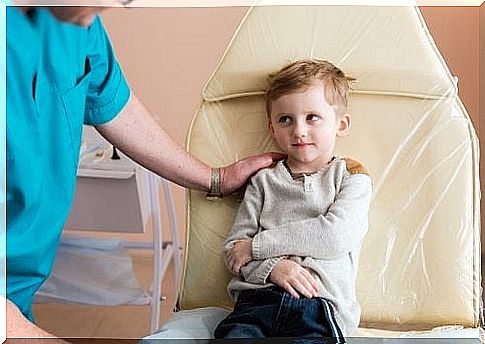Causes And Treatment Of Nephrotic Syndrome In Children

The prevalence of pediatric nephrotic syndrome in different populations around the world is approximately 1 / 10,000 to 40,000 per live birth. What exactly is nephrotic syndrome in children? And what are its causes and possible treatments? Next, we will tell you more about this rare but significant disease in Finland.
What exactly is nephrotic syndrome in children?
To understand what this syndrome really is, we first need to understand more about kidney function. These two bean-shaped organs are located just above the hip and are responsible for filtering blood as follows:
- Eliminate waste from the body, including excess water.
- Accumulates minerals that are important to the body, such as potassium, phosphorus and sodium, and returns them back to the bloodstream.
There are about a million nephrons in each kidney. These nephrons are tiny organs that contain a filter called the capillary, or glomerulus. Capillary clusters are responsible for clarifying and filtering blood plasma. If they do not perform their function properly, the kidneys can receive more protein than they can handle.
One of the functions of proteins, and albumin in particular, is to maintain fluids in the bloodstream. Thus, if proteins are carried by a mixture of excess water and waste, or urine, fluids “escape” from the blood and can lead to swelling in the limbs, arms, hands, and other parts of the body.
Symptoms of nephrotic syndrome in children

In children with nephrotic syndrome, in addition to sudden weight gain and higher than normal urinary protein levels, edema may occur in the following areas:
- Abdominal area.
- On the face and especially in the eye area.
- In the limbs; occurs mainly as swelling of the ankles and toes after sitting or standing.
The above symptoms are the most important and obvious symptoms of the disease, but they are by no means the only symptoms of the syndrome. The following symptoms may also occur in children with nephrotic syndrome:
- Diarrhea
- The child has no desire to urinate
- Dark and frothy urine
- Fatigue
- Abdominal pain
- White skin around the nails
- Lack of appetite
3 causes of nephrotic syndrome in children

The most common cause of nephrotic syndrome in children is idiopathic, and it affects about 90 percent of children between the ages of 2 and 12 who suffer from the disease. The term idiopathic refers to the inability to definitively determine the specific cause that has led to a child’s nephrotic syndrome.
In general, these children suffer from minimal changes in nephropathy, i.e., a kind of kidney dysfunction that cannot be detected under a microscope. The sampled kidney tissue appears normal and therefore it is usually impossible to determine the factors that led to the problem.
The second most common cause of nephrotic syndrome in children is childhood diabetes, which can damage the kidneys by affecting the renal capillaries and preventing them from functioning properly to filter waste and other beneficial components into the body.
The third most common cause of nephrotic syndrome in children is gene mutations. In this case, nephrotic syndrome is called genetic to the exclusion of cases where it occurs in children under 12 months of age, in which case the disease is referred to as congenital nephrotic syndrome.
Possible treatments for nephrotic syndrome in children

If you suspect that your child is suffering from nephrotic syndrome, do not hesitate but contact your doctor immediately. In these cases, your pediatrician will likely ask for a urine sample to analyze and verify the presence of excess protein detectable in the urine.
Next, the doctor tries to find out the causes of the disease and chooses the best possible treatment for the case. In this case, the doctor may also suggest the need for blood tests or even a kidney biopsy, that is, a biopsy or cell sample of living tissue. A kidney biopsy consists of taking a small tissue sample to analyze the condition of the kidneys.
Generally, corticosteroids are prescribed for the treatment of neonatal nephrotic syndrome when the syndrome has no congenital, hereditary, or syndrome symptoms. If corticosteroids cause side effects or show resistance to treatment, other drugs such as cyclophosphamide, mycophenolate mofetil, and ultimately calcineurin inhibitors may also be used to treat nephrotic syndrome in children.
In addition, your doctor may suggest the use of diuretics, or fluids, to control the swelling. For the same reason, a low-salt diet is also generally recommended for children suffering from this nephrotic syndrome.
Children with genetic or hereditary nephrotic syndrome generally do not respond to the above treatments. However, some studies have suggested that these mutations respond well to the so-called immunosuppressant class of drugs. In any case, the expert always determines the best care according to the child’s own characteristics.
Nephrotic syndrome in children is the most common primary glomerulonephritis. If you suspect that your child is suffering from this inflammation, contact your pediatrician as soon as possible. This allows the pediatrician to assess the situation and possibly schedule an appointment for the child with a specialist. And as we always remind: no one can advise better in this situation than an expert in the field.









